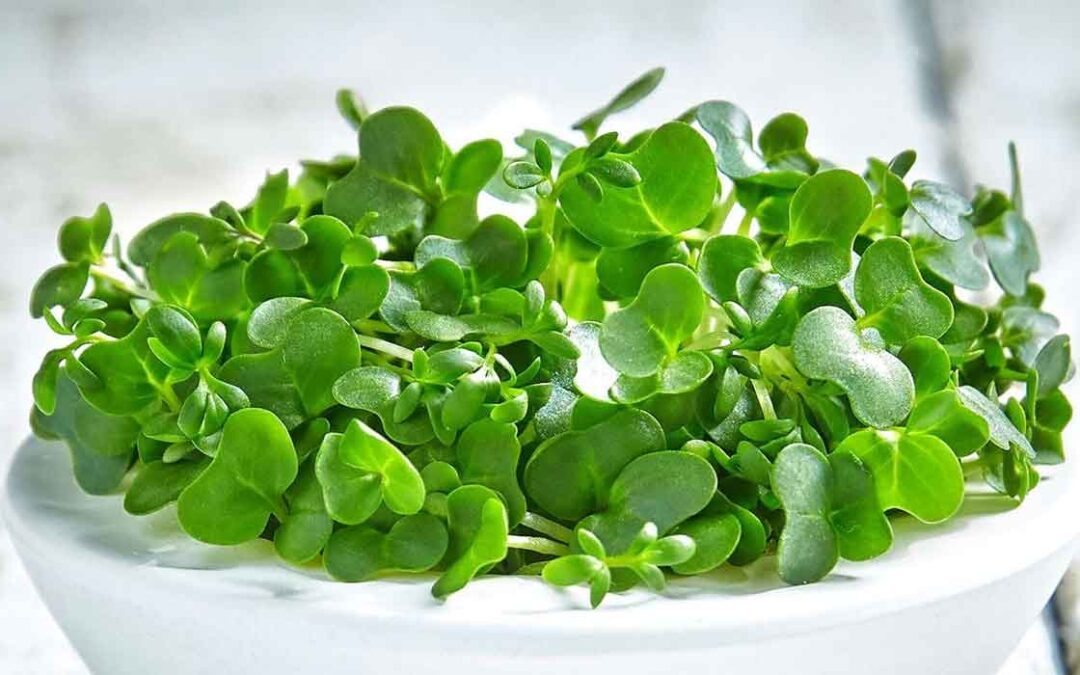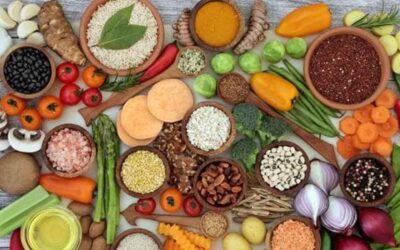Watercress is a leafy, dark green and belongs to the Brassicaceae family of vegetables. It has a round, small, slightly scalloped leaves and has an edible stem with a slightly spicy and peppery flavor. The plant is grown near-natural spring water and slow-moving streams and is considered as one of the super foods.
It has a high ANDI (Aggregate Nutrient Density Index) score and provides a high amount of nutrients for a small number of calories. Watercress has been used as medicine as well as food and has been cultivated in America, Central Asia, and Europe. Also, the ANDI score measures Phyto nutrient, mineral and vitamin content in relation to caloric content. Including more watercress in your diet will shrink your waistline and boost your health.

How to include it in your diet?
Watercress is versatile and can be steamed and eaten as a vegetable, or as salad green with fresh spinach or Romaine lettuce. It can act as an ingredient in the soup near the end of the cooking. Watercress also is a good addition to flatbread, sandwich or wrap or can chop it to add to pasta sauce. Furthermore, watercress can be added to the egg scramble or omelet or can be blended into fruit juice or smoothie. Also, you can also make pesto using watercress. Additionally, watercress proves to be a strong preventive medicine if consumed daily as it may treat several types of conditions and is thus considered as a powerful ‘super food’.
Modern science has identified that watercress has more calcium than milk, more iron than spinach and more Vitamin C than oranges. Since it grows in water, watercress must be washed thoroughly and soaked in cool water with hydrogen peroxide for about half an hour to get rid of impurities, parasites and any sort of pollutants. Also, you can also store it in the refrigerator for 2- 3 days by submerging it in water.
Watercress nutrition facts

As per the USDA National Nutrient Database, 100 grams of raw watercress provides-
- Water [g] 11
- Protein [g] 3
- Carbohydrate, by difference [g] 29
- Sugars, total [g] 2
- Energy [kcal] 11
- Total lipid (fat) [g] 1
- Fiber, total dietary [g] 5
- Iron, Fe [mg] 2
- Phosphorus, P [mg] 60
- Magnesium, Mg [mg] 21
- Calcium, Ca [mg] 120
- Zinc, Zn [mg] 11
- Thiamin [mg] 09
- Potassium, K [mg] 330
- Vitamin C, total ascorbic acid [mg] 43
- Sodium, Na [mg] 41
- Folate, DFE [µg] 9
- Fatty acids, total polyunsaturated [g] 04, Fatty acids, total monounsaturated [g] 01
- Niacin [mg] 2
- Riboflavin [mg] 12
- Vitamin A, IU [IU] 3191, Vitamin A, RAE [µg] 160, Vitamin B-12 [µg] 0, Vitamin B-6 [mg] 13, Vitamin K (phylloquinone) [µg] 250, Vitamin D [IU] 0, Vitamin D (D2 + D3) [µg] 0
- Vitamin E (alpha-tocopherol) [mg] 1
- Fatty acids, total trans [g] 0, Fatty acids, total saturated [g] 03
- Caffeine [mg] 0
- Cholesterol [mg] 0
Impressive Watercress health benefits
- Watercress relieves pediatric asthma- With a daily intake of 0.2g of vitamin C, the force expiratory volume (FEV) may increase in children suffering from asthma. The exposure to dampness and mold of a child changes the results. Those who had no such exposure experienced a 37 percent increase, while those with exposure witnessed a 21 percent increase of FEV per second. Thus, giving watercress to children may provide relief to children suffering from asthma.
- Improves cardiovascular health- This cruciferous vegetable is beneficial in lowering LDL or bad cholesterol which brings down the risk of cardiovascular diseases like arteriosclerosis and other chronic heart diseases. Vitamin C present in watercress works as an antioxidant and reduces the risk of heart tissue damage by oxidative stress.
- Improves the functioning of the thyroid gland- When eaten raw, watercress reduces the production of thyroid hormone. Likewise, uncontrolled production of thyroid hormone leads to goiter or hypothyroidism and the person might suffer from weight gain, constipation, and depression.
Other watercress benefits to health
- Helps in pregnancy- For the development of a healthy embryo, folate is extremely important. Daily consumption of a minimum of 400 mg of folate by pregnant women can prevent the risk of neural tube deficiency.
- It prevents common cold- Consuming vitamin C rich food keeps the common cold at bay. Consuming foods rich in vitamin C has the protective ability to prevent a cold by 66 percent. Also, watercress is a good source of vitamin C too.
- Reduces oxidative damage to blood cells- Vitamin E and vitamin C is very effective in bringing down the oxidative damage to red blood cells. Lastly, note that watercress is containing nutrients that proves beneficial to health.
- Improves eyesight- Vitamin C is effective in cutting down the risk of cataract Introducing watercress, which is rich in vitamin C may protect against developing a cataract.
- Acts as an antidepressant- low folate level increases the risk of depression, the folate in watercress works with neurotransmitters and affects the production of neuro chemical like serotonin. Additionally, the excessive alcohol intake or lack of dietary intake results in a low level of folate, introducing watercress reduces the risk of this chronic disease.
- Improves bone health- Calcium-rich food like watercress brings down the risk of osteoporosis. Also, calcium repairs and builds bone by increasing the production of osteoblasts. The aging population, as well as post-menopausal women, get benefited as the folate present in watercress plays a direct role as in interactive nutrients in maintaining bone density.
Watercress benefits to aging
- Prevents cognitive disorder- An aging population, especially males between 50-70 years of age had a beneficial effect on verbal fluency and cognition when given 800 mcg of folate daily. Further, Watercress, which has a high content of folate proves beneficial in protecting against cognitive decline.
- It prevents stroke– Foods fortified with folate prevents stroke. Also, introducing watercress in the diet which is rich in folate proves beneficial in preventing stroke.
- Improves brain health- The aging population suffers from cognitive changes, consuming vitamin C rich foods protects and repairs the brain tissues. Also, it reduces the bleeding in the case of stroke. Similarly, the high concentration of vitamin C plays an important role in neuron building activity. Further reports show that those who have sustained traumatic head injury usually have a low concentration of vitamin C. Concluding, the daily intake of vitamin C rich food like watercress prevents damage to the brain and also improves the outcome of brain injury.




